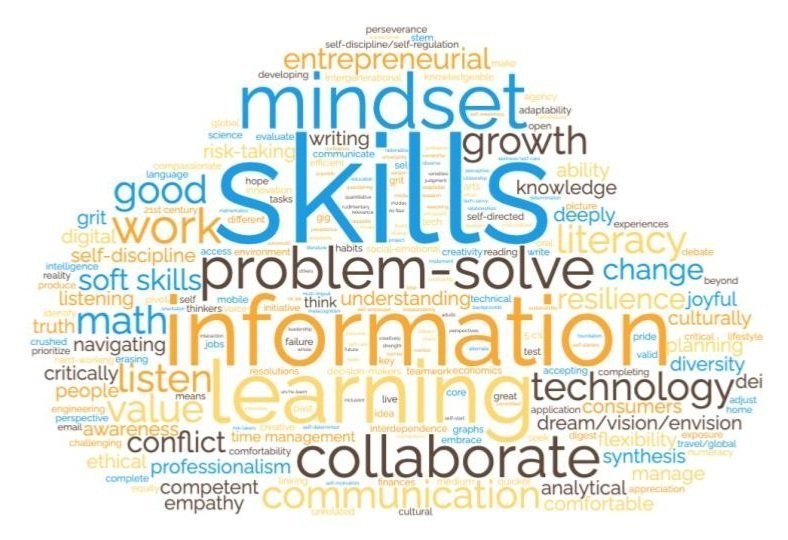The Answer is in the Room
“What do students need to know and be able to do to be successful?” We posed this question to eight Educator Preparatory Programs (EPPs) across Arkansas as part of the work we are doing with ForwARd Arkansas, US PREP, and TPI-US. The Walton Family Foundation has funded the efforts of this Design Collaborative, consisting of eight EPPs, to grant up to a million dollars to those teams with dedicated plans for innovation, sustainability, and commitment to equity in transforming their pre-service programs. Specifically, 2Rev’s work is to push for broader, outside-the-box perspectives regarding what students and teachers need to know and be able to do to be successful in Arkansas and beyond. This perspective is a critical foundation for the transformative work each team will embark upon.
To that end, we led eight sessions with faculty members in each of the eight EPPs to think broadly about:
What do the students of Arkansas need to be successful in a changing world?
What do their teachers need to help realize that success?
What challenges will their teacher candidates face?
How will their EPP meet their candidates’ and students’ needs?
In each of these sessions, the conversations would play out similarly; within a mere 20 minutes, each team would come up with a list of all the knowledge, skills, and dispositions necessary for students in Arkansas to be successful in life beyond the four walls of their school. And then we asked: “If it was so easy to come up with that list, then why aren’t our schools currently focusing on these skills?” And then everyone would start to exchange looks… (cue crickets).
This scenario is similar in most communities we visit. We all have a simple vision of what students truly need to know and be able to do to be successful in the future. It’s usually a list that includes the “5 C’s” (communication, collaboration, critical thinking, creativity, character). But the reality is that we were in eight different rooms with eight different EPPs in the same state, and each had very different ideas about preparing teachers and future leaders to support our kids toward that seemingly simple vision. This isn’t isolated to just EPPs. There’s great variance among schools within the same district and even classrooms within the same building.
So if the question is, “Why aren’t our schools preparing students and teachers for success?,” then one answer might be: “Let’s look at the context.”
Context is critical to understanding the needs, identifying the barriers, and building appropriate structures and solutions to meet the needs. The roadmap to success in an urban district will look different from a rural district. The roadmap to success in a self-contained classroom will look different from a general education classroom. Similarly, the roadmap to success in one EPP will look different from that of another EPP. To co-construct an appropriate plan, it’s imperative to seek context by listening to the stakeholders who are closest to the work.
To illustrate, let’s go micro before we go macro. If your goal is to become a more learner-centered educator and leader, you need to listen and respond to what your learners need. A student with their head down on their desk seems disengaged, but if you understand the context of what happened the night before, you may understand why they are too exhausted to keep their head up in your class. Did the student have to work late? Are they unhoused? Are they addicted to their phone? Are they struggling with their homework load? This information potentially changes your response from a pedagogical move to more social-emotional support.
Similarly, if you are an EPP trying to implement systems-wide change, you need to listen and respond to those who are participating in the system. For example, the faculty of one EPP that participated in the Design Collaborative appreciated the perspective shift so much that they invited us to hold a similar session for district partners with whom they place teaching candidates. Within that group of district partners were principals and educators who worked closely with the candidates. The EPP team wanted to know how they could be a better partner to each of those districts and whether or not their vision for teacher preparation aligned with the vision of folks on the ground serving the students in their regions. The partners appreciated that the EPP took the time to listen to them and co-create solutions for their context.
This is a vital part of the work that 2Revolutions does in partnership with the schools, districts, and systems that we support. This approach serves not only to inform our work but also to model the personalization and learner-centeredness that needs to be done consistently in order to best serve the needs of all stakeholders. A one-size-fits-all approach doesn’t work with EPPs, just as it doesn’t work with leaders, educators, or students. It is imperative to do the work of listening and getting your teams, faculty, and students to buy into a vision that you co-construct before proposing solutions you think are right. As long as you are centering the experience of your students and stakeholders, the approach can look a little different than what you had in mind. That is okay. Change is messy, but it’s even messier–and far less effective–when you don’t intentionally incorporate your stakeholders into providing vital context and constructing the journey.
“What do students need to know and be able to do to be successful?” That question is easy. “How do we get them there?” is much more difficult. Finding the solution will take some listening for context and co-construction with educators, but the answer is almost always in the room.


